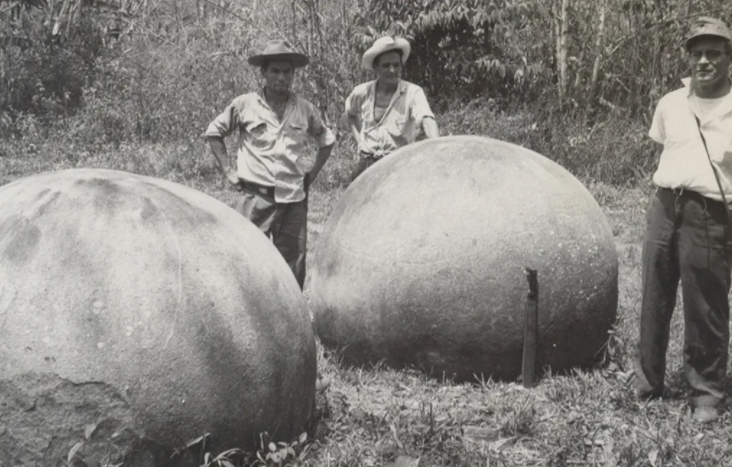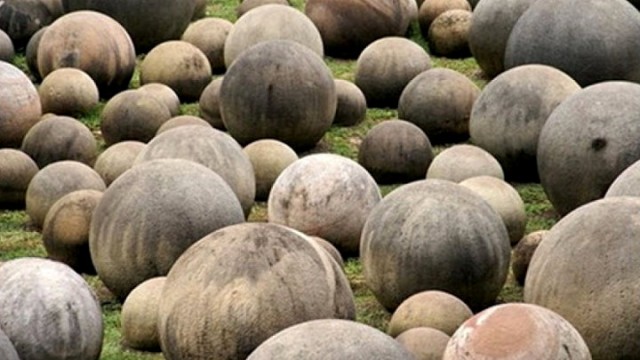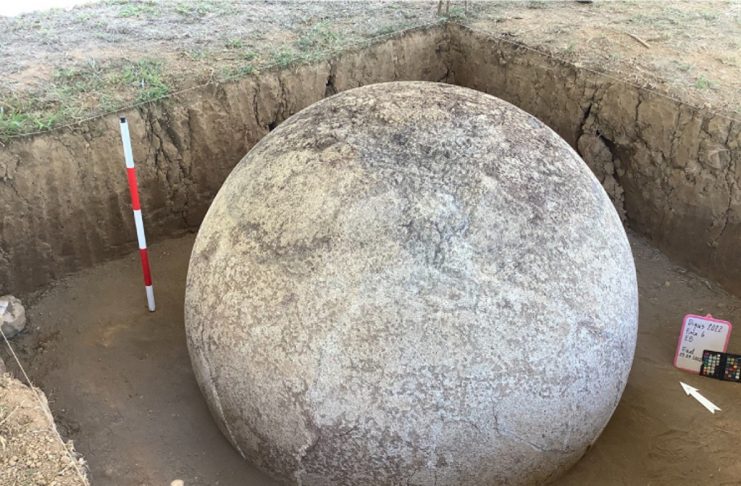Costa Rica's giant stone spheres were first discovered in the 1930s by workers clearing the jungle for banana plantations. Local legend had it that gold was supposed to be hidden inside the mysterious stone spheres. Many of the petrospheres had been split open, some of them blown up. But they were empty. So where did these giant stone spheres come from and, just as importantly, what was their purpose?
It should be said that archaeologists have found similar giant spheres in all corners of the globe, belonging to the peoples of the past. So, the discoveries made in Costa Rica, where more than 300 stone spheres belonging to the Diquis culture were identified, were not unique, but no less mysterious.
The Diquis emerged in the Rio Grande de Terraba valley, where they established complex - social, economic and political systems to govern society. During the period of maximum prosperity, many settlements grew into large communities around the lands of the Terraba River. Large structures consisting of stone spheres, paved areas and circular mounds were built here.
The Dikes reached a peak of cultural development between 800 and 1500 AD. The stone spheres, according to our knowledge, were also placed in public squares, along the approaches to the dwellings of the ruling elite or next to the homes of public leaders.
Archaeologists from the National Institute of Anthropology and History (INAH) and the National Museum of Costa Rica (MNCR) excavated 6 stone spheres at the Finca 6 archaeological site, located in the canton of Osa in the province of Puntarenas. Some, unfortunately, have fallen into disrepair due to changes caused by rock constitution, moisture damage and flooding.


Giant stone balls and their purpose
But what is their purpose? Even today, it is not known where the Costa Rican stone spheres might have come from? Although there are several in the State Museum in San José and new excavations allow new specimens to be discovered at irregular intervals, buried in the silt of the delta or in the mud of the jungle, very little is known about them.
The heaviest stone ball discovered to date weighs 16 tonnes. They are all perfectly rounded and the same diameter. Many of them have an extremely smooth surface, which means that they have most likely been polished with a mixture of water and sand. One wonders, however, how the people who made them could achieve such perfect rounding, especially given the volume and weight of these balls. Indeed, making these balls requires not only a certain knowledge of geometry, but also the appropriate technique. Moreover, it is virtually impossible to make such objects without mechanical means. Furthermore, the giant stone spheres of Costa Rica are made of granite, a material that is not found in this region. The nearest granite quarry is 50 kilometres downriver from the find.
The region where these stone spheres were found was inhabited by many Indian peoples. However, none of them mentioned these spheres in their legends, which could refer to them. None of them can claim authorship or provide any information about them. We do know, however, that these stone balls had a special significance for the Indians, as some of them, including the small ones, were used as funeral offerings. Some researchers have suggested that the arrangement of the small orbs guessed representations of astronomical constellations. However, these conclusions cannot be applied to the larger stone balls, as these objects have undergone weathering or warfare over the centuries, so that in most cases their original locations are unrecognisable today.

Costa Rica's giant stone balls
Moreover, on the rare occasions when the arrangement of the stone spheres can still be deciphered, the spheres form straight, wavy lines or triangles. Furthermore, this representation of stellar bodies as spheres is inconsistent with the beliefs of the Maya and Incas, who believed that celestial bodies, such as the sun, were disk-shaped. Thus, this theory would suggest the existence of an entirely original culture in Costa Rica, which many scientists consider unlikely.
Finally, according to another theory, the perfection sought by the makers of the giant Costa Rican stone spheres must be interpreted as a kind of religious sanction. The stone spheres, the result of this extremely precise work, must have symbolised divine perfection. This interpretation also explains that there are very few traces of ancient beliefs. However, we will probably never know for sure whether this theory corresponds to reality. After all, it is not only time, but also people themselves who willingly destroy their heritage and the past.


 and then
and then 
